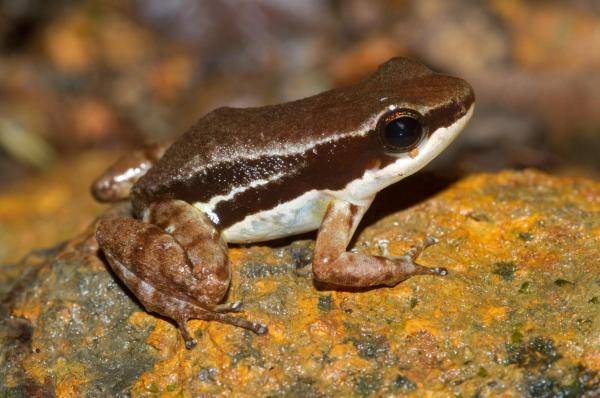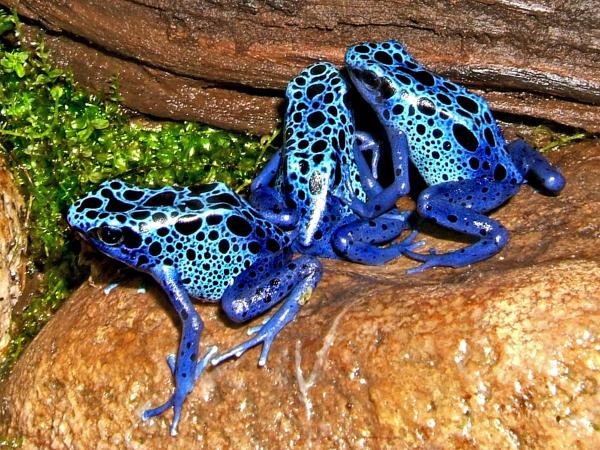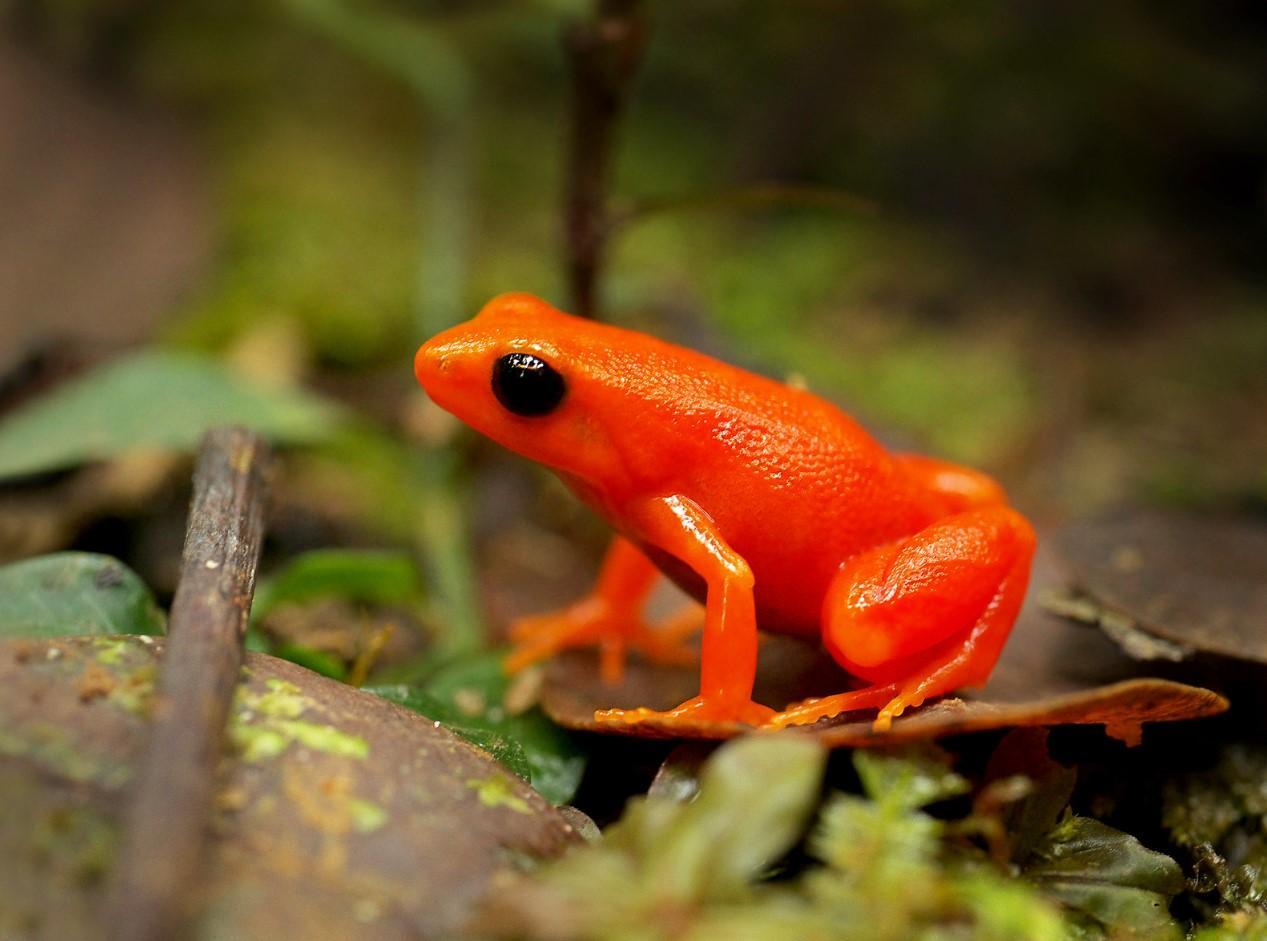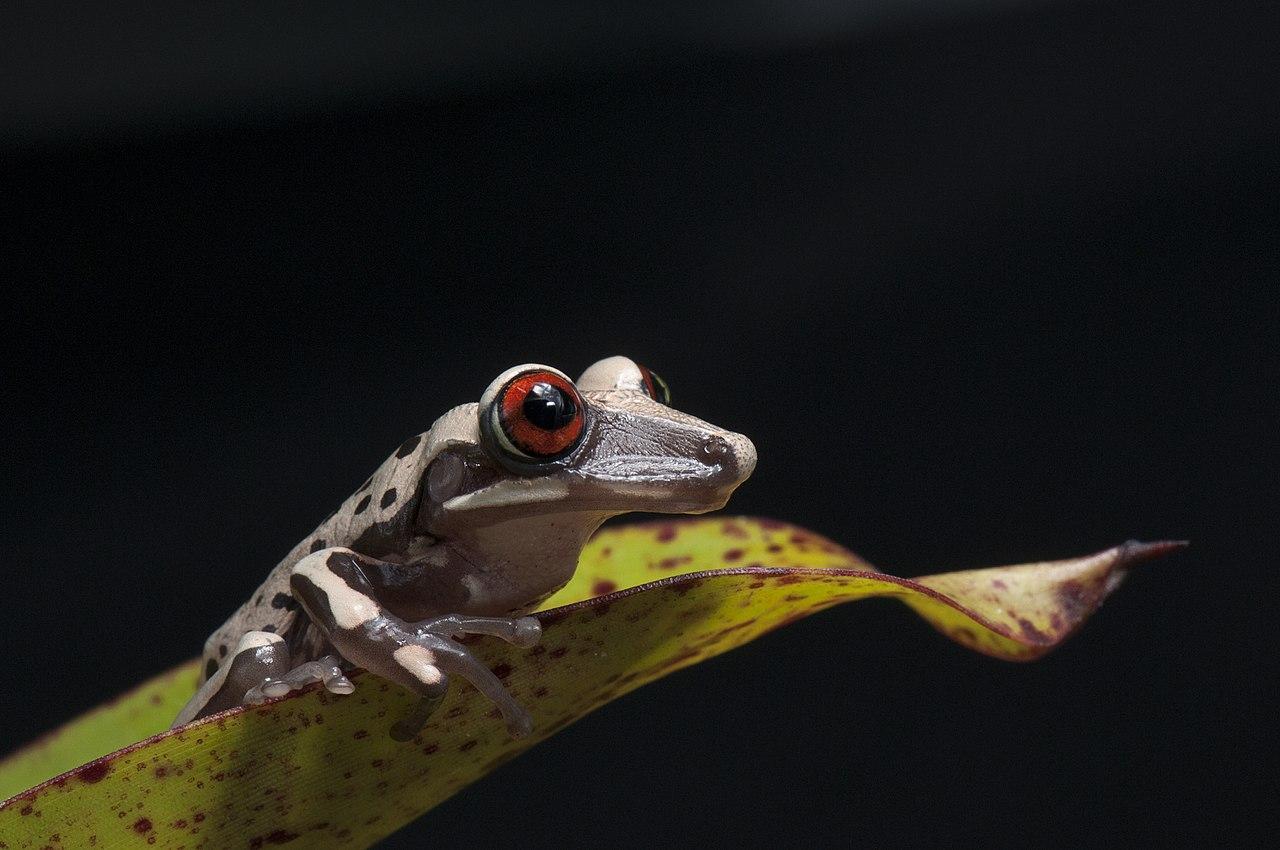Types of Poisonous Frog Species


Of the many different types of poisonous frogs, some are deadly. Their poison is so strong that it is often used by indigenous communities as a dart poison to kill much larger animals. These frogs did not create their poison to help these communities hunt, but they did so for self-preservation. This is thanks to a trait known as aposematism. Aposematism is when an animal has very bright and vibrant colorations which is used to warn off other animals not to touch them. These colors alert potential predators that eating the frog will be more trouble than its worth.
Although the purpose of these colors is practical, it results in some of the most beautiful and exotic looking creatures. Learn more at thedailyECO with our list of the types of poisonous frog species with photos.
- Yellow-banded poison dart frog (Dendrobates leucomelas)
- Golden poison frog (Phyllobates terribilis)
- Golfodulcean poison frog (Phyllobates vittatus)
- Golden mantella (Mantella aurantiaca)
- Mimic poison frog (Ranitomeya imitator)
- Rocket frog (Colostethus spp.)
- Blue poison dart frog (Dendrobates azureus)
- Bruno's casque-headed frog (Aparasphenodon brunoi)
- Greening's frog (Corythomantis greeningi)
- Southern corroboree frog (Pseudophryne corroboree)
- How do poison frogs attack?
Yellow-banded poison dart frog (Dendrobates leucomelas)
Dendrobatid frogs are amphibians from the family Dendrobatidae, a family of exclusively poisonous tree frogs. The frogs in this family are commonly known as poison dart frogs or poison arrow frogs. Dendrobates leucomelas is also known as the bumblebee poison frog thanks to their distinctive yellow and black skin coloration, as seen in the photo. They do not produce their own toxins to create their poison. Instead, they synthesize it from their food.
In the case of this species of poisonous frog, the yellow-banded poison dart frog obtains the toxins from arthropods which are the basis of its diet. The poison is distributed to their skin. While we do not know for sure which arthropods give them the toxin, it is believed they are derived from ants. If these frogs are not fed with the correct arthropods, their skin will not be poisonous.
You can learn more about the skin of these amphibians with our article on the differences between a frog and a toad.

Golden poison frog (Phyllobates terribilis)
Also known as the golden dart frog or the golden poison arrow frog, this is the most poisonous type of frog in the Dendrobatidae family. This makes them the most poisonous of all frogs and, perhaps, the most dangerous vertebrate in the world.
The golden poison frog lives on the Pacific coast of Colombia. Its poison is composed of batrachotoxin, batrachotoxin A and homobatrachotoxin that cause respiratory arrest. The poison is obtained from Brachymyrmex spp. and Paratrechina spp. ants. Some indigenous peoples of this area use the poison of these frogs to coat their arrowheads to protect and hunt.

Golfodulcean poison frog (Phyllobates vittatus)
Although it is the least poisonous frog species in the genus Phyllobates, it has a very strong effect on whoever is exposed to the toxins. This is because it can cause seizures and even paralysis. It is only 1.3 " (3.5 cm) long, but this is relatively large for types of poisonous frog. These frogs tend to be very small, one of the reasons they need extra protection. The large the frog, the more toxins they can store in their skin.
As shown in the photo below, the Golfodulcean poison frog has one of the most striking patterns among all poison frog species. Its legs are black, but have a shimmering appearance which makes it look as if they have been glitterbombed. On their back are two orange or yellow stripes that run vertically along their body.

Golden mantella (Mantella aurantiaca)
It is not only the Dendrobatidae family which is home to types of poisonous frog. The golden mantella belongs to the Mantellidae family.
It lives only in Madagascar and is a bright mustard yellow to orange color. As you can see in the photo below, it is all oe color except for the eyes. This colorations warns its predators that it is very dangerous. It is also very small at 0.7 to 1.1" (2 to 3 cm) in length. Their skin secretes alkaloid toxins that are also believed to come from ants. Unfortunately, as with many animals from Madagascar, they are considered to be an endangered species.

Mimic poison frog (Ranitomeya imitator)
Although this frog is poisonous, it uses Müllerian mimicry to copy the patterns and colors of other species of poison dart frogs to confuse and protect itself from predators. This mimicry is a form of biological adaptation which allows them to protect themselves as a species. The photo below shows a morph of this poisonous frog species which has an orange and black body with bright blue patterns on the legs.

Rocket frog (Colostethus spp.)
These frogs live in regions of Panama and northwestern South America, up to northern Peru. What may attract the most attention about this poisonous frog type is that it is special because it does not have aposematic coloration, despite being a dendrobatid. As the photo shows, it is completely brown with a beige line on the side.
If you want to know what other small creatures you should keep away from, check out our list of the most deadly poisonous caterpillars in the world.

Blue poison dart frog (Dendrobates azureus)
This dendrobatid lives in Brazil and Suriname. It is a vibrant royal blue color with black specks, although the color can vary slightly between populations with some being more purple in color. They measure 1.6 to 2" (4 to 5 cm in length). They are known for being very territorial and aggressive, both with frogs of their own species and others. They synthesize their poison from formic acid of beetles and ants which they consume.

Bruno's casque-headed frog (Aparasphenodon brunoi)
This frog has spines on the edge of its skull with which it strikes potential predators to pierce and inject a venom. This venom is secreted by glands connected to these spines. Unlike the other frogs we have shared, this one does have the ability to synthesize its own venom. The venom is 25 times more toxic and lethal than that of the venomous snakes of the Bothrops genus, among which are the pit vipers, lanceheads and rattlesnakes.
You can discover more dangerous animals with our list of the most venomous types of fish.

Greening's frog (Corythomantis greeningi)
Like the previous species, it also has poisonous spines on its skull. These have larger venom glands and spines, but with less toxic venom than A. brunoi. They are still twice as deadly as a rattlesnake, so they are not to be messed with. It is one of the few truly venomous frogs, because they manufacture their veonom and do not obtain it from food like many of the others on our list of poisonous frog species.

Southern corroboree frog (Pseudophryne corroboree)
This is a poisonous frog native to Australia and Tasmania which is also special because it can synthesize its own poison. As the photo shows, they are black frogs with many bright yellow curved lines. The alkaloid poison is unique and is called pseudophrinamine, referring to the scientific name of the frog. This venom is secreted through the skin. Although it has a function against predators, it has also been suggested that it serves to combat possible infections, to which anurans are extremely prone.

How do poison frogs attack?
Poisonous frogs do not attack for the sake of it, in fact they do not usually attack at all. They will only use their poison to defend themselves from threats since they do not use it to obtain their prey. They are very territorial animals, so you should not enter their space or disturb their tadpoles. It is only when this occurs might a type of poisonous frog try to attack.
Its method of attack is quite simple. Anyone who touches a poisonous frog will die or become seriously ill. This means they have a form of passive attack and do not need to engage in combat. The poison is distributed throughout the skin, except for the two cases already mentioned of Corythomantis greeningi and Aparasphenodon brunoi. These venomous frogs bump or hit with the head to puncture and inject venom.
Now that you know more about types of poisonous and venomous frogs, you may want to know more about how they feed and defend themselves. You can do this with our related article which rxplains whether frogs have teeth.
If you want to read similar articles to Types of Poisonous Frog Species, we recommend you visit our Biology category.
- Beatty, R., Beer, A., & Deeming, C. (2010). The book of nature. Great Britain: Dorling Kindersley.
- Jovanovic, O., Vences, M., Safarek, G., Rabemananjara, FC, & Dolch, R. (2009). Predation upon Mantella aurantiaca in the Torotorofotsy wetlands, central-eastern Madagascar. Herpetology Notes, 2(1), 95-97.
- Jared, C., Mailho-Fontana, PL, Antoniazzi, MM, Mendes, VA, Barbaro, KC, Rodrigues, MT, & Brodie, ED (2015). Venomous frogs use heads as weapons. Current Biology, 25(16), 2166-2170.















